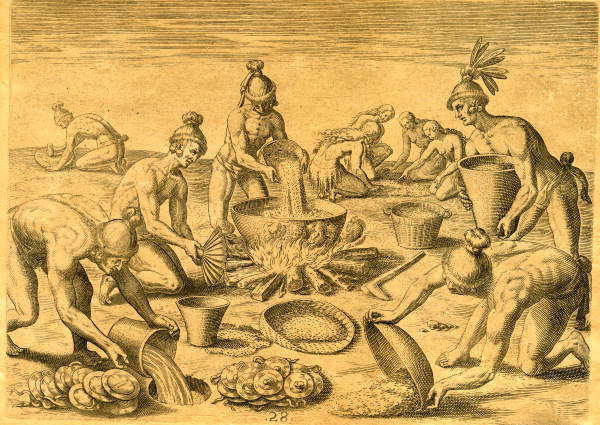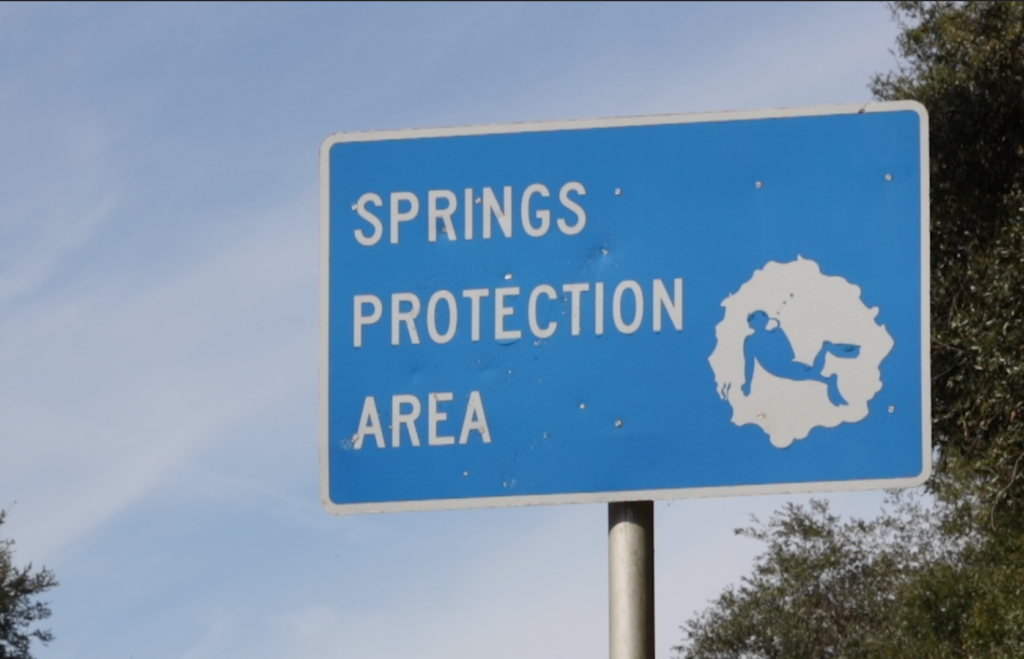Blackwater and Trembling Earth
Scroll down to explore The Upper Suwannee
The Suwannee River carved its way through geologic and human history…
The blackwater flowing in the upper part of the river begins as water drains from the Okefenokee Swamp and down 246 miles to the Gulf of Mexico. It cuts Florida into two halves: panhandle and peninsula.
The Okefenokee is one of the largest and best-preserved swamps in North America and contains the largest National Wildlife Refuge in the eastern United States.
Gum and cypress trees stand tall in the blackwater. It helps saturate the ground layer of decaying vegetation or “peat” year-round.
Peat beds are sturdy enough to support trees. The beds float to the surface and create a ground layer that dips and shakes when disturbed. Native Americans labeled the Okefenokee “land of the trembling earth.” Although some of the peat beds are strong enough to walk on, the terrain is nearly impassable on foot due to large lakes and wet prairies.
The Suwannee is unique compared to most rivers because its flow is not altered by dams or other water-controlled structures.
The Suwannee still flows as it did in prehistoric times.
The Suwannee’s flow formed over millions of years, cutting into layers of earth and limestone rock. The region’s geology is dominated by karst topography. It is characterized by porous rock deposits – such as limestone, and formed from calcium buildup of decomposed marine life. Limestone is easily dissolved by natural acids that form in water, which creates underground caverns and pockets that fill up with groundwater to form an aquifer.
The Suwannee’s water supply comes from two sources: surface water and groundwater. Surface water is synonymous with rainwater, and groundwater emerges from the aquifer in the form of springs.
There are hundreds of documented springs in the Suwannee River Basin, and many more are undocumented.
A geologic shift occurs around White Springs, Florida, where the layers of soil and earth drop down closer to the karst limestone.
This shifting point is caused by the Cody Escarpment, also called the Cody Scarp, which represents the old shoreline from millions of years ago when much of Florida’s present shape was underwater. The water supply to the Suwannee shifts at the Cody Scarp from a surface water dominant system to a groundwater dominant system.
The upper Suwannee is characterized by clay soils and sediment that are not easily drained or suitable for agriculture.
However, when the upper Suwannee shifts into the middle Suwannee after the Cody Scarp, the soil becomes easily drained.
Ideal agricultural conditions and access to a large supply of free freshwater allowed for the intensive practices and development that characterize the Suwannee today.
Human History on The Suwannee
Humans have lived along the banks of the Suwannee for thousands of years, however little is known about the people of the region prior to the arrival of European settlers. Pottery, bones and burial mounds have been found from the people who inhabited the area from 800 B.C. to 700 A.D.

By the time the Europeans arrived in Florida, about 200,000 Timucuan Indians lived in and around the Suwannee basin. Natives considered the springs around the region sacred, and wounded warriors could rest on their shores without fear of being attacked. There is little recorded history of the Timucuans aside from oral histories and accounts collected by European settlers.

The Seminole Indians also lived along the river’s banks until they were drove out by the US government. Years of conflict with settlers as well as disease led to the destruction of native communities and culture. Military roads developed to help drive out the Indians would pave the way for American expansion into the state that became official in 1845. Steamboats and bridges created the infrastructure for supply chains and commerce in the region.
Today, much of the land surrounding the Suwannee is rural farmland or forest. Although there is little development alongside the Suwannee, groundwater extraction and water pollution are growing concerns—especially in the face of a changing climate. This, in addition to increasingly intensive agricultural practices, is diminishing the health of the Suwannee’s water supply.
